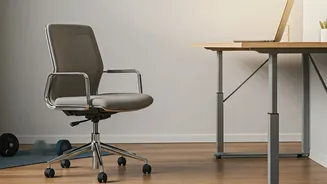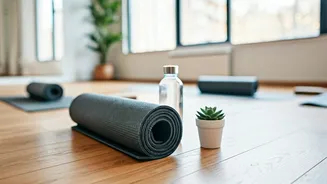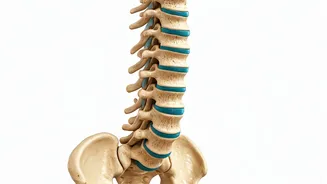Shoulder Rolls: Liberation
Shoulder rolls are a fantastic way to loosen up the muscles around your shoulders and upper back, which often bear the brunt of bad posture from desk work.
Begin by sitting comfortably, ensuring your back is straight but not stiff. Gently shrug your shoulders up towards your ears, feeling the tension. Hold for a moment, then roll your shoulders backward in a circular motion, bringing your shoulder blades together. Repeat this movement several times. Following this, reverse the direction, rolling your shoulders forward. This helps to stretch the muscles in both directions. The benefits of shoulder rolls include increased blood flow to the area, reduced stiffness, and a feeling of relaxation. They can be done discreetly at your desk, making them a perfect micro-break exercise whenever you feel tense.
Spinal Twist: Revitalize Spine
The seated spinal twist is another superb stretch, targeting the spine and surrounding muscles. Sit upright in your chair, keeping your feet flat on the floor. Place your right hand on your left knee and your left hand behind you on the chair for support. Gently twist your torso to the left, looking over your left shoulder. Hold the stretch for about 20-30 seconds, breathing deeply. Then, repeat the exercise on the other side. This twist improves spinal mobility, massages internal organs, and helps to release tension in the back. Proper breathing is crucial; as you inhale, imagine lengthening your spine, and as you exhale, deepen the twist. Regular practice can prevent back pain and enhance your posture, combating the effects of a sedentary lifestyle. It is a good practice to take a pause and twist your back in the middle of your work.
Wrist, Finger Stretches: Relief
Desk work often involves repetitive movements of the hands and wrists, leading to strain. To alleviate this, dedicate some time for wrist and finger stretches. Start by extending one arm in front of you, palm facing down. Use your other hand to gently pull your fingers towards your body, feeling the stretch in your forearm. Hold for 20-30 seconds. Then, reverse the stretch by pointing your fingers towards the floor and pulling them back. Make sure that you are feeling gentle stretches. For finger stretches, make a fist and then slowly extend your fingers, spreading them wide. Repeat this several times. This reduces the risk of carpal tunnel syndrome, improves circulation, and keeps your hands flexible. Consider incorporating these stretches throughout the day to keep your hand fit.
Seated Neck Stretch: Soothe
The seated neck stretch provides much-needed relief to the often-strained neck muscles. Sit comfortably, keeping your back straight. Gently tilt your head towards your right shoulder, aiming to bring your ear close to your shoulder without raising it. Hold this position for 20-30 seconds, feeling the stretch on the left side of your neck. Repeat on the other side. You can also add a slight pull with your hand to deepen the stretch. Next, gently tilt your head forward, bringing your chin towards your chest. Hold for a few seconds. The seated neck stretch helps to release tension headaches, improves neck mobility, and promotes relaxation. Make sure that you are not hurting your neck by doing this stretch. Doing these stretches regularly can reduce stiffness and improve your overall well-being at the desk.










